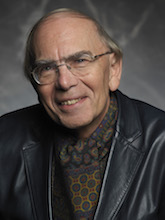
Hubert Hermans' Dialogical Self Theory is one of the most robust and usable multiplicity-of-self models available. Dr. David Van Nuys speaks with Hermans on the dialogical self and dreams. The newest book is The Dialogical Self in Psychotherapy: An Introduction, being released today in paperback.
#496 – Dreaming and the Dialogical Self with Prof. Hubert Hermans
Hubert Hermans is professor emeritus at the Radboud University of Nijmegen, The Netherlands. He is best known as the creator of Dialogical Self Theory. He wrote books like The Dialogical Self: Meaning as movement (1993), co-authored by Harry Kempen, Self-Narratives: The Construction of Meaning in Psychotherapy (1995), co-authored by Els Hermans-Jansen, and Dialogical Self Theory: Positioning and Counter-Positioning in a Globalizing Society (2010), co-authored by Agnieszka Hermans-Konopka. He is editor of the Handbook of Dialogical Self Theory (2012), co-edited by Thorsten Gieser.
Since 2002 he is president of the International Society for Dialogical Science (ISDS) and editor-in-chief of the International Journal for Dialogical Science (IJDS). He is initiator and chair of biennial International Conferences on the Dialogical Self, which are organized in different countries and continents. For his merits to society and science, he was, on behalf of the Queen of the Netherlands, decorated as Knight in the Order of the Netherlands Lion in 2002.
Some of Hubert’s most impressive memories was when he looked, as a 6-year-old boy, in September 1944, at the passing soldiers of the American 30th Infantry Division “Old Hickory,” who liberated his place of birth, Maastricht, from the German occupation. Some months later, he survived a bomb attack which killed many neighbors living opposite his parents’ house. He describes such autobiographical events in his book Between Dreaming and Recognition Seeking (2012), in which he applies Dialogical Self Theory to his own life.
A psychology podcast by David Van Nuys, Ph.D.
Podcast: Play in new window | Download
